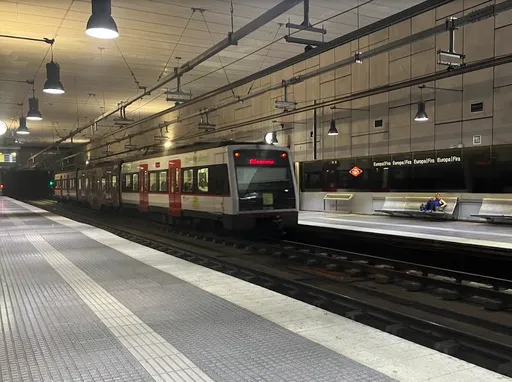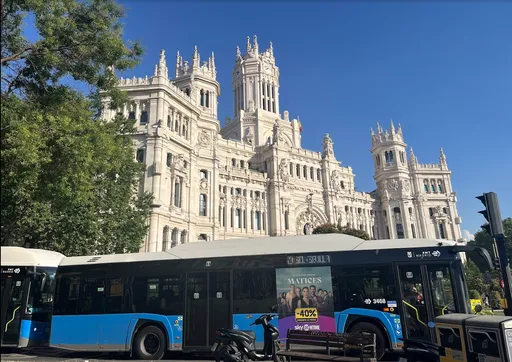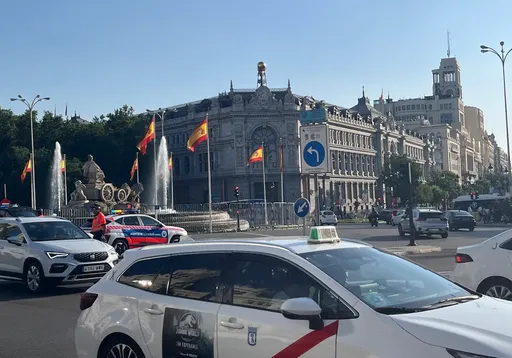Returning to Spain after 22 years, I found the public transport system there to be quite an interesting experience. In particular, the metro systems in Barcelona and Madrid exhibited distinct features that were markedly different from the familiar public transport in Seoul, Tokyo, Taipei, and London. Going beyond just following a travel itinerary, in this post, I will delve into the characteristics, advantages, and disadvantages of Spain’s public transport, comparing it to other cities.
Hot Subways, Yet Surprisingly Clean and Safe
The first thing I noticed was the temperature. Unlike the subways in Seoul, Tokyo, and Taipei, which can feel quite cold even in midsummer due to the air conditioning, the metros in Spain were rather hot. I was sweating profusely. However, despite the heat, the overall cleanliness was much better than that of the London Underground. It wasn’t as pristine as that in Seoul or Tokyo, but I felt comfortable throughout my rides.
Before my trip to Spain, I had heard the notorious rumors about safety concerns for tourists and pickpocketing. However, the security inside the metro stations and trains was actually quite good. I wondered, “Did I really need to worry this much?” Contrary to the rumors, the Spaniards I encountered were all very friendly. It made me feel as if the allegations of tourist hatred were unfounded, even though it was still early July and not quite peak tourist season.
Frequent Train Intervals and the Inconvenience of the Zone System
The train intervals in the Barcelona and Madrid metros were very frequent, so even if you missed a train, the next one arrived quickly, making the wait time quite short. This was a point of satisfaction for both cities. The transfer system was mostly straightforward, but one drawback was that there was no English announcement. I had to pay close attention to know where I was.
Also, like in London, there was a ‘Zone’ concept. However, this Zone was not clearly indicated on the subway map, which caused some inconvenience. Transfers were free between lines 1 to 4, but for line 8, you had to exit through the turnstile and buy a new ticket. This contrasted with London, where the zones are clearly marked on the map, allowing you to understand them in advance.
This Zone system was particularly confusing when using the airport line. For instance, when going to the airport, if you transfer to the airport line at Terrassa Station, you only need to pay the airport line fare. However, if you quickly want to go and change at España Plaza Station to line 8 and then take the airport line from Europa Fira Station, you have to pay the fare for line 8 as well, which is quite expensive. It’s advisable to use Terrassa Station when transferring between the airport line and the regular metro for maximum efficiency.

In Seoul or Tokyo, if you exceed a certain fare zone, you can settle additional charges by tagging your card when you exit, which is very convenient, whereas in the Spanish metro, there was no concept of fare adjustment based on distance when exiting. This felt rather inconvenient.
Madrid's Unique Transport Card and Free Buses
The transport fare in Madrid was slightly cheaper than in Barcelona. While a one-way ticket in Barcelona was about 2.7 euros, in Madrid it was around 1.5 euros. In Madrid, like in Seoul, I had to purchase a transport card initially, which cost about 4 to 4.5 euros—quite expensive. Comparing this to Seoul, where you can get a refund of the card deposit, or to Tokyo's Suica or Pasmo cards which are issued for free, this felt a bit disappointing.

However, Madrid had a very special bus. The 001 and 002 free buses conveniently went to most famous tourist attractions. Just be aware that even though it’s free, you can’t just board and go inside; the driver will shout in Spanish for you to exit and you must inform how many are boarding and take a free ticket. Initially, I didn’t know this, causing the bus to not be able to depart, the driver shouting, and all eyes turned on me, which was quite embarrassing. Thankfully, with the help of one passenger, I understood the situation and managed to get my ticket.
Both cities offered options like a day pass for unlimited travel, but since most famous tourist spots were concentrated in the city center, they were within walking distance. Therefore, in my case, I found it much cheaper to purchase a one-way ticket whenever needed and indeed traveled that way.

The Status of Public Transport in Seoul
It seems that there is nowhere else in the world where public transport is as affordable and of such quality as in Seoul. Seoul’s free transfer system between subways and buses is uniquely convenient and distinct. Of course, this is entangled with South Korea’s complex political issues, so it’s not easy to compare it with other countries’ systems, but in terms of cost-effectiveness, it is undoubtedly the best. Tokyo is also excellent and strict about punctuality, but it comes with higher costs. Seoul is undoubtedly a great city operating superb public transport facilities with exceptional cost performance.
Spain's public transport offered both familiarity and novelty in various aspects. In the next post, I will come back with another interesting topic about traveling in Spain.

There are no comments.